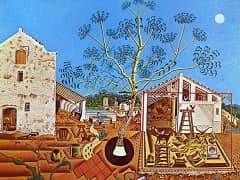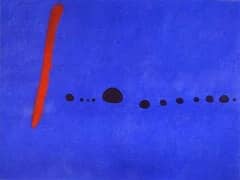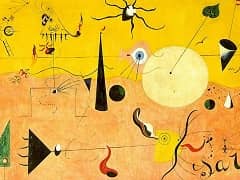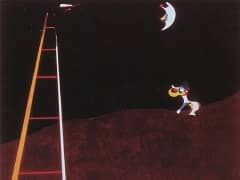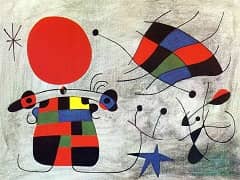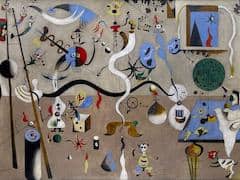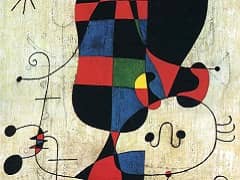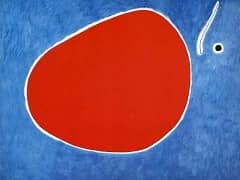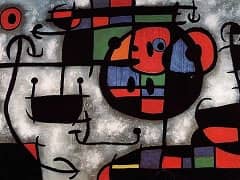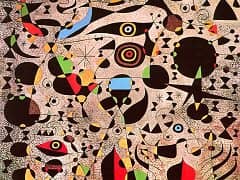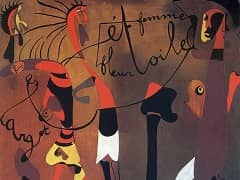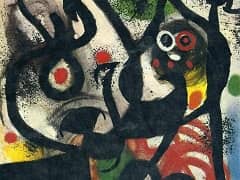Peinture, 1926 by Joan Miro
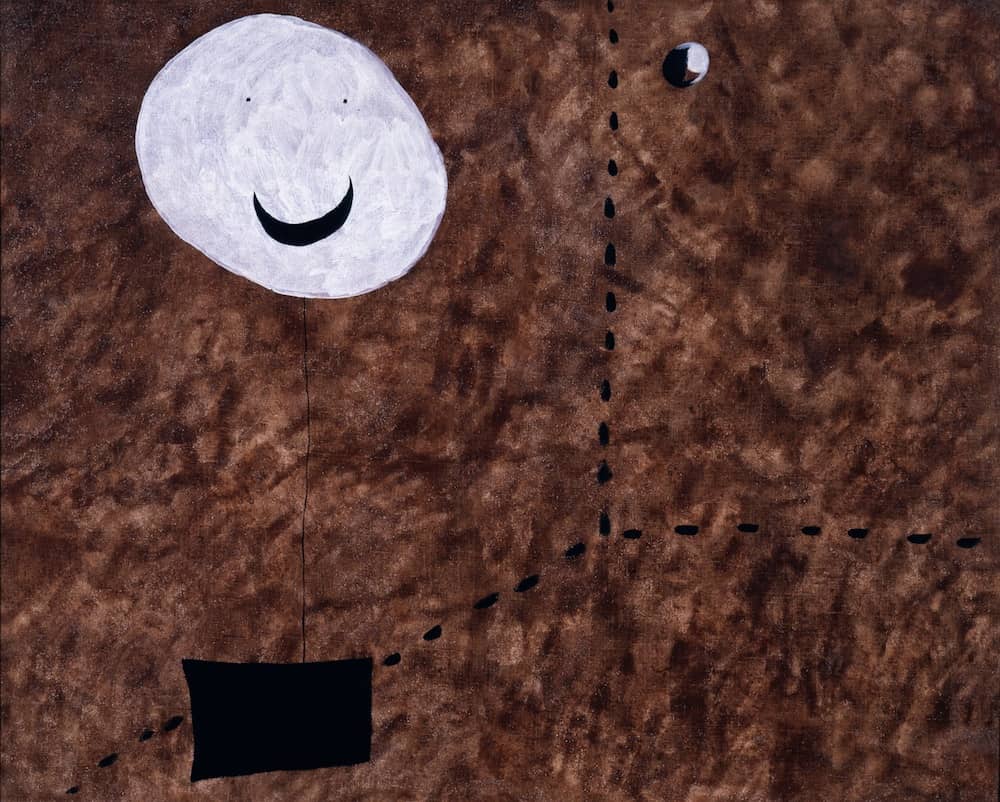
When Joan Miro arrived in Paris from Barcelona in 1920, he was fortunate that within a few months he found an empty studio that was next door to Andre Masson, bringing him into contact with the
avant-garde. However, he also spent time in the Louvre looking at the old masters including Caravaggio, El Greco,
and Leonardo da Vinci. From Leonardo's paintings, Miro would have been made aware of the use of
random and chance stains that are often incorporated in his work as a part of the creative process. This, of course, came at a time when Automatism was being discussed in the group around Andre Breton.
In about the same time Miro painted his "magnetic fields": spare, monochromatic canvases inhabited by simple and often whimsical biomorphic shapes.
The lone form in this work beams across the empty, hazy space of the picture. The only spatial definition is provided by a dotted line, which connects one edge to the form and then extends upward.
Spontaneous and intuitive, the smiling shape is tenuously tied to a rectangular base, its glazed grin lit by the half-shadowed moon.
The dream-like atmosphere is a dramatic departure from Cubism into a world defined only by the imagination.

